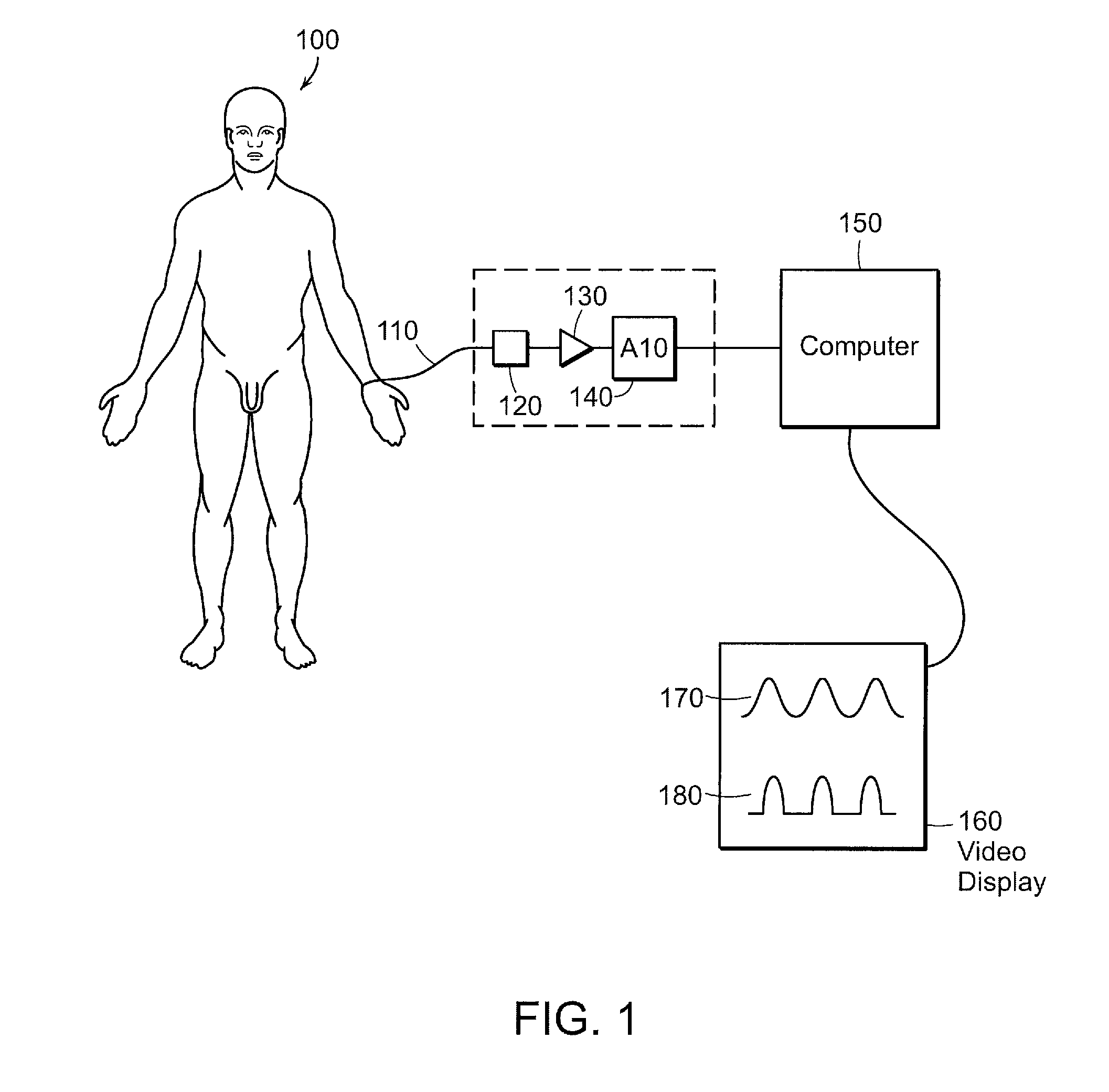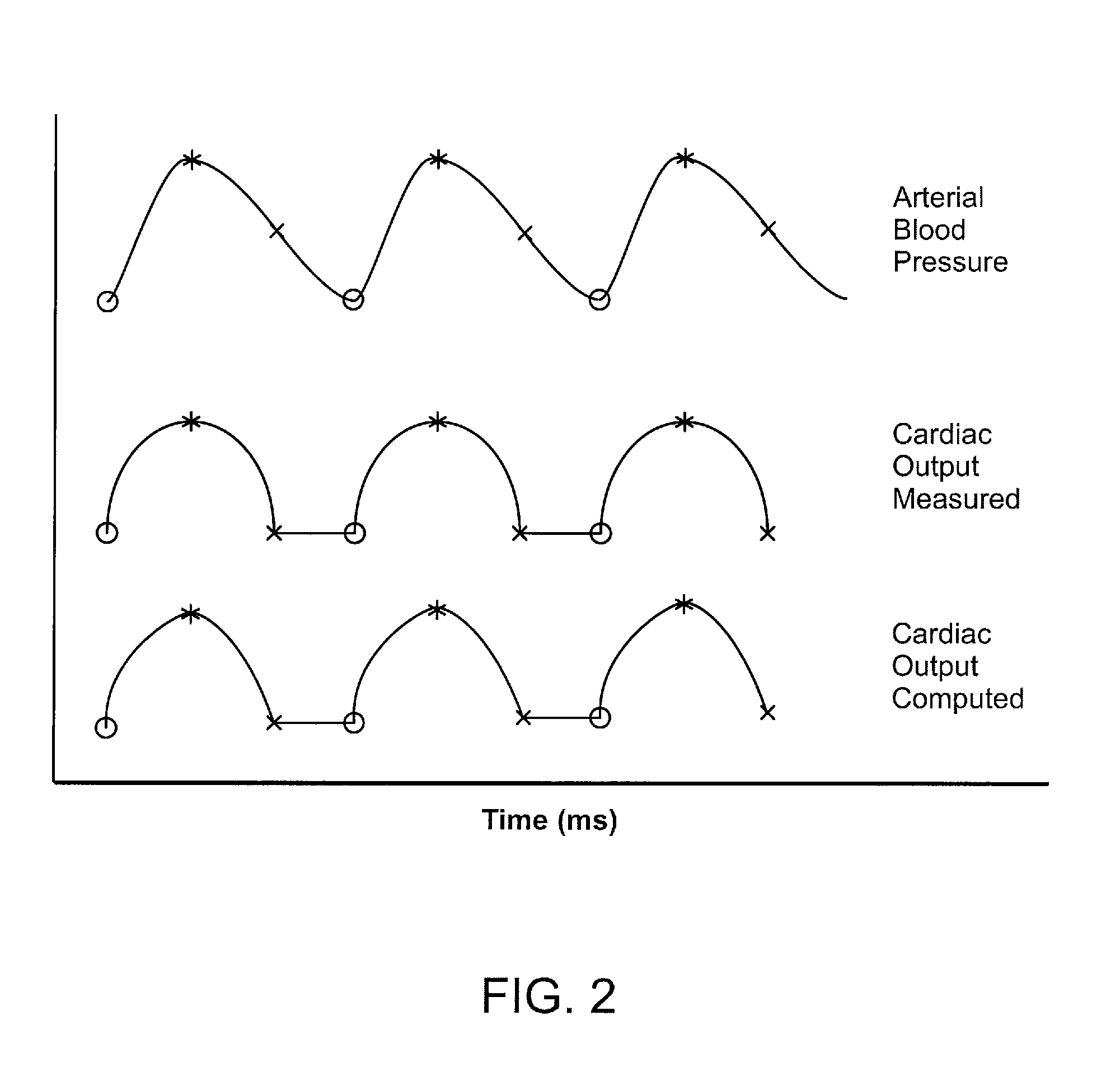Methods and apparatus for visually representing a cardiac status of a patient
a technology for visually representing a patient's cardiac status and a patient's heart rate, which is applied in the field of methods and apparatus for visually representing a cardiac status of a patient, can solve the problems of not being able to perform non-trivial invasive procedures, not being feasible in all patients, and being difficult to achieve. , to achieve the effect of reducing the width of the filter waveform
- Summary
- Abstract
- Description
- Claims
- Application Information
AI Technical Summary
Problems solved by technology
Method used
Image
Examples
example 1
[0053]In this example (see FIG. 1), the input signal is a central or peripheral arterial signal recorded by means of an indwelling catheter or a noninvasive continuous arterial blood pressure transducer. In the case of a fluid filled catheter (110) placed, for example, in the radial artery of a patient (100) the catheter is interfaced with a transducer (120) which converts the pressure in the fluid in the catheter into an electrical signal. This electrical signal is amplified and conditioned by means of an electronic amplifier (130). This amplifier may be incorporated in an existing bedside monitor which interfaces with the appropriate blood pressure sensor. The amplified and conditioned electrical signal is converted into digital form by means of an analog to digital converter (140). A digital computer (150) is used to construct a transforming filter and to apply this filter to the input signal in order to compute an output signal proportional to the phasic cardic output. A video s...
example 2
[0086]In a preferred embodiment the transforming filter is constructed utilizing two filters one of which is a nonlinear filter. First, a non-linear filter is utilized which involves computing the logarithm of the arterial blood pressure signal (y=ln(Pa) and then computing the second derivative of the resulting signal yielding d2y / dt2. In this preferred embodiment a second filter, h, is then applied to d2y / dt2 and the properties of the filter, h, adjusted to reduce the output signal from the filter during the diastolic periods. In this preferred embodiment the output signal from this second filter, d2z / dt2, will represent an estimate of the second derivative of the logarithm of the central aortic pressure (z≅ ln(PA)). The first integral of d2z / dt2, dz / dt, (the integration constant adjusted to set the time average of dz / dt to zero) may then be computed. The value of dz / dt evaluated during the diastolic periods will provide an estimate of −1 / τ where τ is the central aortic decay time ...
PUM
 Login to View More
Login to View More Abstract
Description
Claims
Application Information
 Login to View More
Login to View More - R&D
- Intellectual Property
- Life Sciences
- Materials
- Tech Scout
- Unparalleled Data Quality
- Higher Quality Content
- 60% Fewer Hallucinations
Browse by: Latest US Patents, China's latest patents, Technical Efficacy Thesaurus, Application Domain, Technology Topic, Popular Technical Reports.
© 2025 PatSnap. All rights reserved.Legal|Privacy policy|Modern Slavery Act Transparency Statement|Sitemap|About US| Contact US: help@patsnap.com



